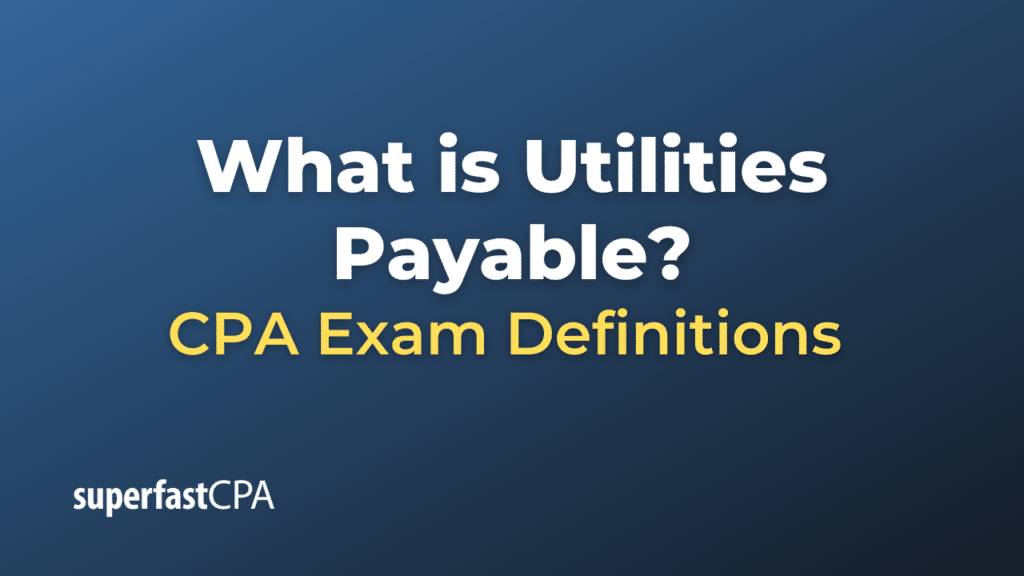Utilities Payable
Utilities payable is an accounting term that refers to the amount owed by a business or individual for utilities consumed but not yet paid for. This can include services like electricity, gas, water, and heating. Essentially, it is a liability that represents the amounts due to utility providers.
When a business receives a bill for utilities but has not yet paid it, the amount is recorded as “Utilities Payable” in the Accounts Payable section of the balance sheet. This is to accurately reflect the company’s financial position, showing both the assets it owns and the liabilities it owes.
Accounting Treatment
When a utility bill is received, an accounting entry is made to debit the Utilities Expense account and credit the Utilities Payable account. This increases both the expense for the period and the liability on the balance sheet.
This records the $500 as an expense in the income statement for August and also records it as a liability on the balance sheet under “Accounts Payable” or “Utilities Payable,” if the business chooses to break it out separately.
Payment of Utilities Payable
When the bill is eventually paid, another journal entry is made to debit the Utilities Payable account to decrease the liability and credit the Cash or Bank account to reflect the outflow of money.
This entry removes the liability from the balance sheet and reflects the cash payment in the company’s financial records.
By accurately accounting for utilities payable, a business can maintain a clear picture of its current liabilities and cash flow situation. This is essential for effective financial planning and management.
Example of Utilities Payable
let’s look at a hypothetical example featuring a small coffee shop called “Café Aroma.”
Scenario:
Café Aroma receives utility bills for electricity, water, and gas each month. For simplicity, let’s say they receive the following bills for the month of September:
- Electricity: $800
- Water: $200
- Gas (for heating and cooking): $300
Accounting Entries:
When Bills are Received:
Upon receiving these bills, Café Aroma would record them as utilities payable since they represent amounts owed but not yet paid. The journal entries would look like this:
- Electricity Bill:
- Debit Utilities Expense: $800
- Credit Utilities Payable: $800
- Water Bill:
- Debit Utilities Expense: $200
- Credit Utilities Payable: $200
- Gas Bill:
- Debit Utilities Expense: $300
- Credit Utilities Payable: $300
These entries would increase the Utilities Expense account, which will show up on the income statement, and also increase the Utilities Payable liability account, which will appear on the balance sheet.
When Bills are Paid:
Let’s say Café Aroma pays these bills on October 5th. The accounting entries to reflect these payments would be:
- Payment of Electricity Bill:
- Debit Utilities Payable: $800
- Credit Cash or Bank: $800
- Payment of Water Bill:
- Debit Utilities Payable: $200
- Credit Cash or Bank: $200
- Payment of Gas Bill:
- Debit Utilities Payable: $300
- Credit Cash or Bank: $300
These entries remove the utilities payable amounts from the balance sheet, as the liability has been settled, and reduce the Cash or Bank balance to reflect the payments made.
Summary:
By accurately recording utilities payable and subsequently paying them off, Café Aroma maintains an accurate representation of its financial standing. It shows that $1,300 ($800 for electricity, $200 for water, and $300 for gas) was owed and accounted for as a liability, and that this liability was cleared when the bills were paid.
Understanding and accurately accounting for utilities payable helps the café in planning its cash flows, evaluating its financial health, and making informed business decisions.













